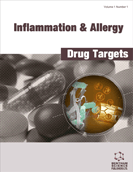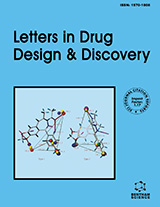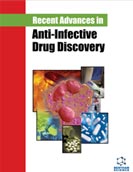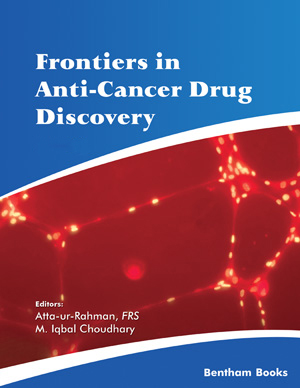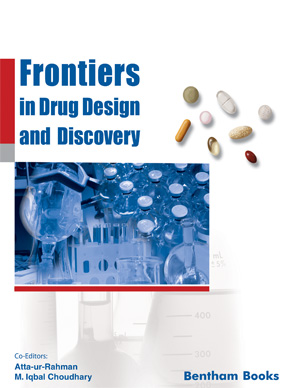Abstract
Existing treatments of IBD adopt targeted oral drug delivery route for delivering bioactive agents more efficiently and with fewer side effects. However, the complex and dynamic luminal environment of the GIT and major intra/ inter patient variability greatly affects treatment, resulting in variable clinical response in patients. Mathematical simulation model can be employed to consider the complex luminal environment to asses the performance of drug delivery systems for clinical efficacy. The objective of this paper was to evaluate existing targeted oral drug delivery system for the treatment of IBD subject to inter/intra patient luminal variability using in silico experiments employing previously developed mathematical model. Simulation results indicated that the average small intestinal drug release was 44±19% and 48±21% for healthy and UC subjects, respectively. The systemic absorption of drug approached 10-25% in healthy controls and 16-32% in UC subjects. Calculated drug release from the simulations for different scenario of pH and TT had a good agreement with the clinical in vivo data (13-36% and 17-35% for healthy and UC subjects, respectively). This agreement was also true for 5-ASA and its metabolite (N-acetyl-5-ASA) recovery in the colon. The computational model has a high degree of agreement with data obtained from literature. Physicians can use characteristic performance curves of different delivery systems produced in silico to select a delivery system that would work best for their patients based upon the patients pH and transit time profiles. It also could be used by the pharmaceutical industry to improve their medicine efficacy by altering the design.
Keywords: Computer simulation, drug targeting, ulcerative colitis, anti-inflammatory agents, in silico, non-steroidal, colon, inflammation
Inflammation & Allergy - Drug Targets (Discontinued)
Title: Biological Variability and Targeted Delivery of Therapeutics for Inflammatory Bowel Diseases: An In Silico Approach
Volume: 6 Issue: 1
Author(s): Nahor Haddish-Berhane, Ashkan Farhadi, Chell Nyquist, Kamyar Haghighi and Ali Keshavarzian
Affiliation:
Keywords: Computer simulation, drug targeting, ulcerative colitis, anti-inflammatory agents, in silico, non-steroidal, colon, inflammation
Abstract: Existing treatments of IBD adopt targeted oral drug delivery route for delivering bioactive agents more efficiently and with fewer side effects. However, the complex and dynamic luminal environment of the GIT and major intra/ inter patient variability greatly affects treatment, resulting in variable clinical response in patients. Mathematical simulation model can be employed to consider the complex luminal environment to asses the performance of drug delivery systems for clinical efficacy. The objective of this paper was to evaluate existing targeted oral drug delivery system for the treatment of IBD subject to inter/intra patient luminal variability using in silico experiments employing previously developed mathematical model. Simulation results indicated that the average small intestinal drug release was 44±19% and 48±21% for healthy and UC subjects, respectively. The systemic absorption of drug approached 10-25% in healthy controls and 16-32% in UC subjects. Calculated drug release from the simulations for different scenario of pH and TT had a good agreement with the clinical in vivo data (13-36% and 17-35% for healthy and UC subjects, respectively). This agreement was also true for 5-ASA and its metabolite (N-acetyl-5-ASA) recovery in the colon. The computational model has a high degree of agreement with data obtained from literature. Physicians can use characteristic performance curves of different delivery systems produced in silico to select a delivery system that would work best for their patients based upon the patients pH and transit time profiles. It also could be used by the pharmaceutical industry to improve their medicine efficacy by altering the design.
Export Options
About this article
Cite this article as:
Haddish-Berhane Nahor, Farhadi Ashkan, Nyquist Chell, Haghighi Kamyar and Keshavarzian Ali, Biological Variability and Targeted Delivery of Therapeutics for Inflammatory Bowel Diseases: An In Silico Approach, Inflammation & Allergy - Drug Targets (Discontinued) 2007; 6 (1) . https://dx.doi.org/10.2174/187152807780077264
| DOI https://dx.doi.org/10.2174/187152807780077264 |
Print ISSN 1871-5281 |
| Publisher Name Bentham Science Publisher |
Online ISSN 2212-4055 |
 16
16Related Articles
-
Protective Effects of Heme-Oxygenase Expression in Cyclosporine A - Induced Injury
Current Neurovascular Research Fish Oil has Beneficial Effects on Behavior Impairment and Oxidative Stress in Rats Subjected to a Hepatic Encephalopathy Model
CNS & Neurological Disorders - Drug Targets Review in Pharmacokinetic Models on Corticosteroids
Mini-Reviews in Medicinal Chemistry Management of Glia-Mediated Neuroinflammation and Related Patents
Recent Patents on Inflammation & Allergy Drug Discovery Dietary Intakes and Food Habits of Wheelchair Basketball Athletes Compared to Gym Attendees and Individuals who do not Practice Sport Activity
Endocrine, Metabolic & Immune Disorders - Drug Targets The Role of Melatonin in Multiple Sclerosis, Huntington's Disease and Cerebral Ischemia
CNS & Neurological Disorders - Drug Targets Cardiac Consequences of Anti-Inflammatory Drugs in Experimental Models
Anti-Inflammatory & Anti-Allergy Agents in Medicinal Chemistry Antimicrobial Peptides in COPD - Basic Biology and Therapeutic Applications
Current Drug Targets Synthesis and Biological Evaluation of Mutual Prodrugs of Carboxylic Group Containing Some Non-Steroidal Anti-Inflammatory Drugs and Propyphenazone
Current Drug Delivery Markers of Arrhythmogenic Risk in Hypertensive Subjects
Current Pharmaceutical Design Critical Role of the Endocannabinoid System in the Regulation of Food Intake and Energy Metabolism, with Phylogenetic, Developmental, and Pathophysiological Implications
Endocrine, Metabolic & Immune Disorders - Drug Targets Oral Nano-Delivery Systems for Colon Targeting Therapy
Pharmaceutical Nanotechnology N-Succinyl Chitosan as Buccal Penetration Enhancer for Delivery of Herbal Agents in Treatment of Oral Mucositis
Current Drug Delivery Old Weapons for New Wars: Bioactive Molecules From Cnidarian Internal Defense Systems
Central Nervous System Agents in Medicinal Chemistry Inflammation, Sleep, Obesity and Cardiovascular Disease.
Current Vascular Pharmacology Pharmacological Activity of Cardiovascular Agents from Herbal Medicine
Cardiovascular & Hematological Agents in Medicinal Chemistry Research Advancements in Porcine Derived Mesenchymal Stem Cells
Current Stem Cell Research & Therapy Chemokines as Potential Therapeutic Targets in Atherosclerosis
Current Drug Targets The Role of Coagulation in Pulmonary Pathology
Inflammation & Allergy - Drug Targets (Discontinued) Activation of Integrin β1 Mediates the Increased Malignant Potential of Ovarian Cancer Cells Exerted by Inflammatory Cytokines
Anti-Cancer Agents in Medicinal Chemistry


